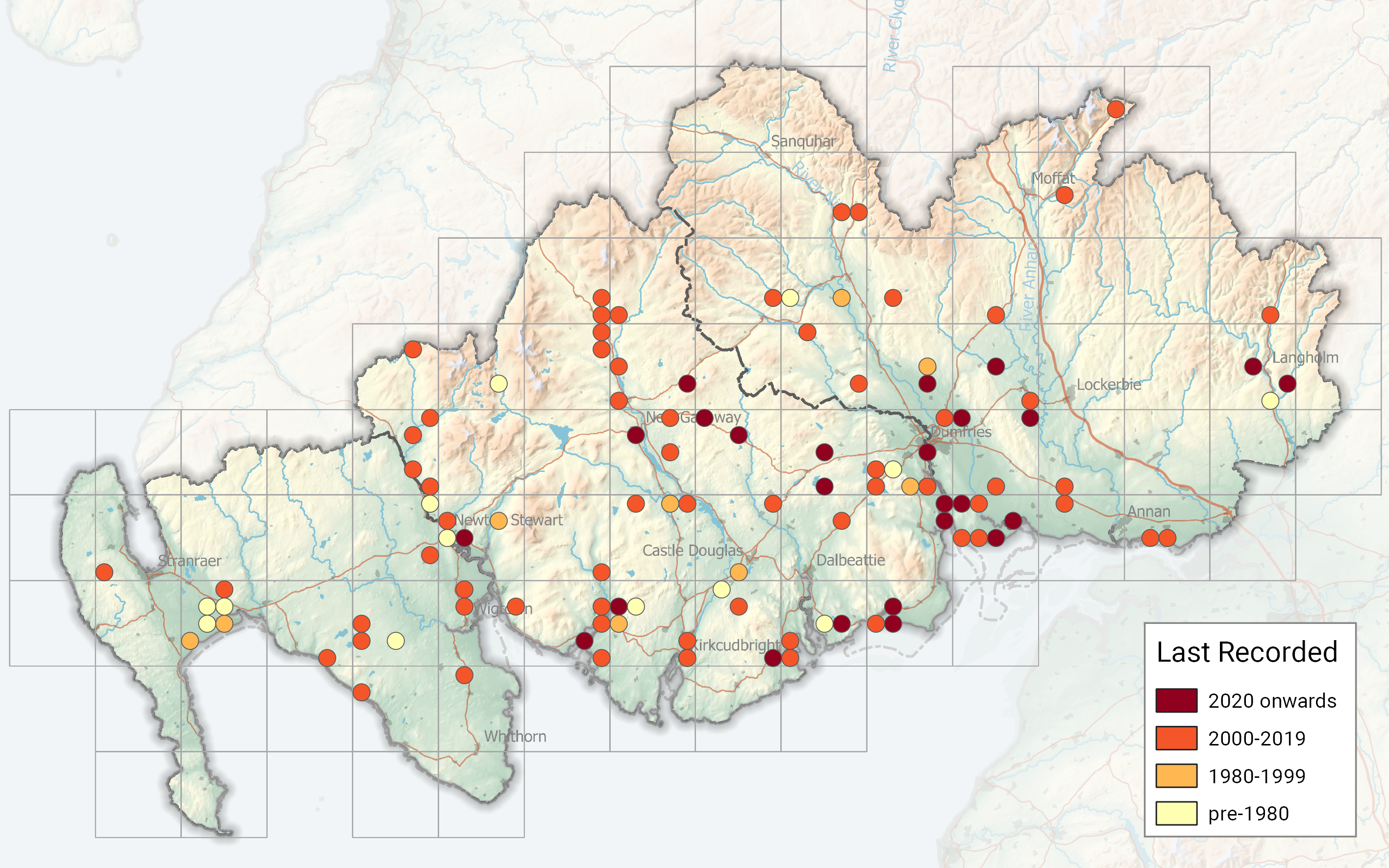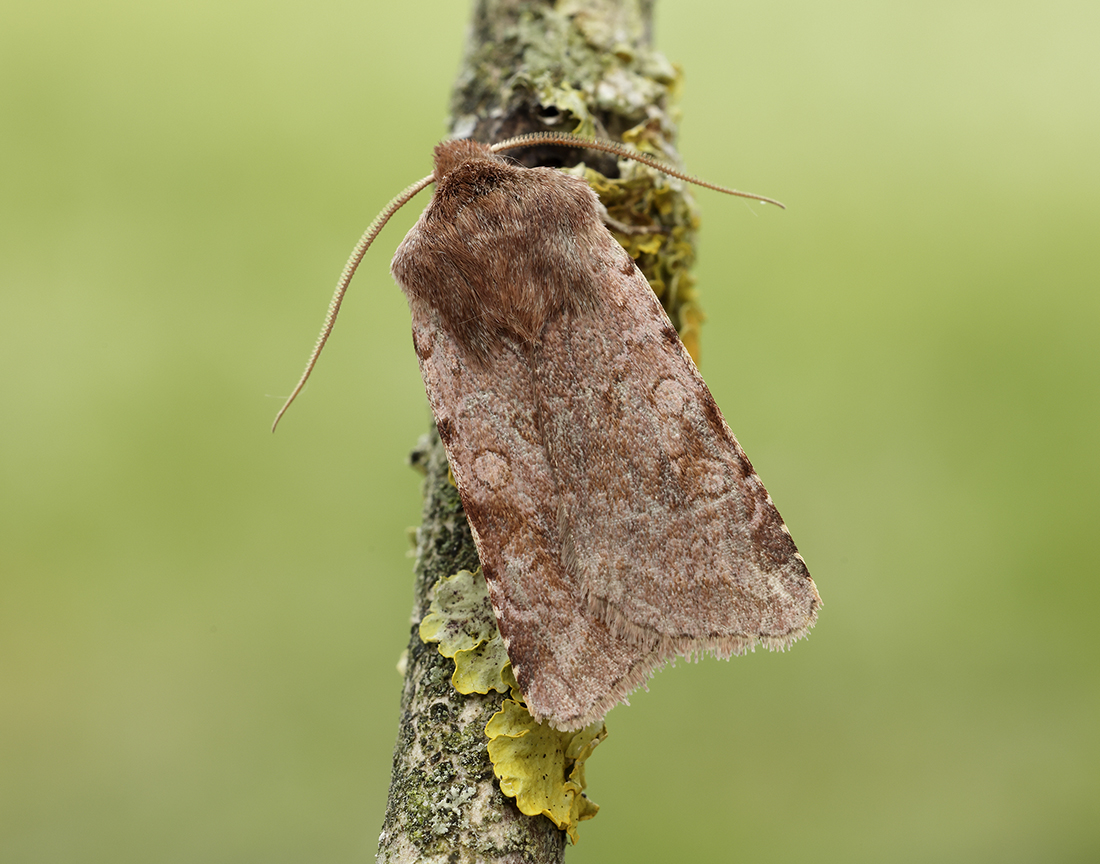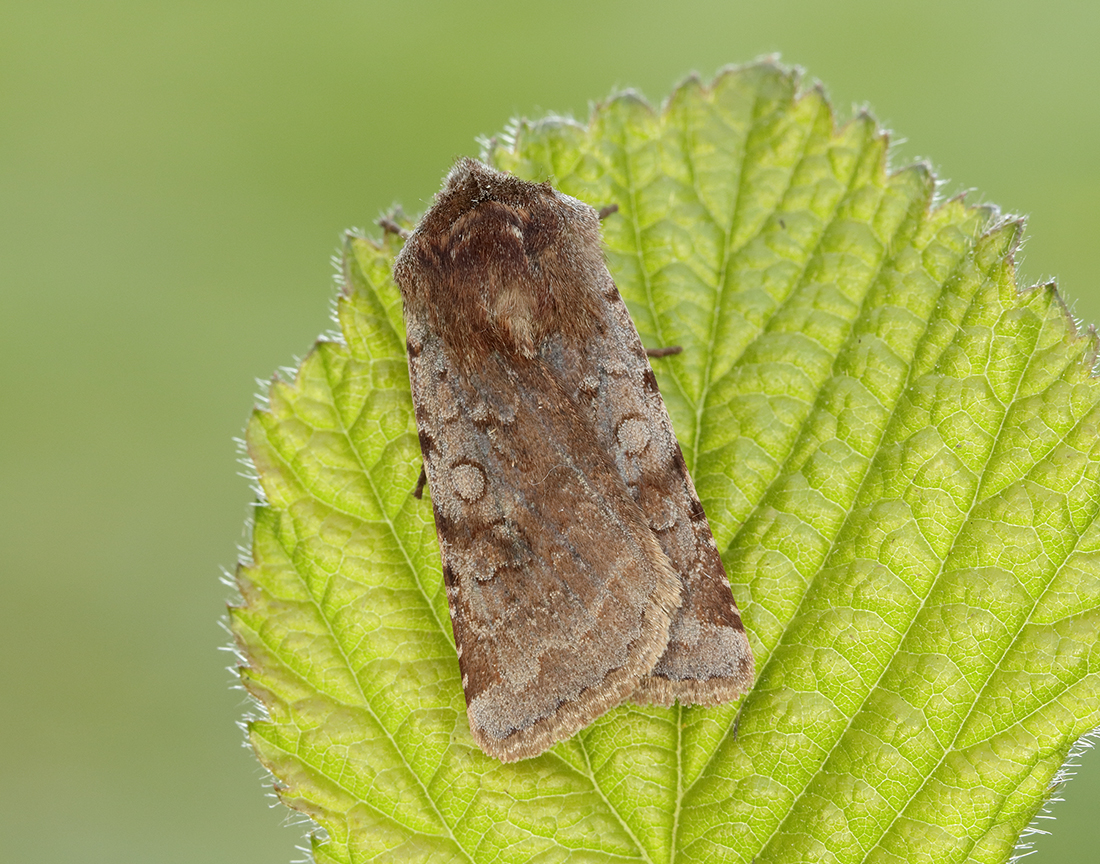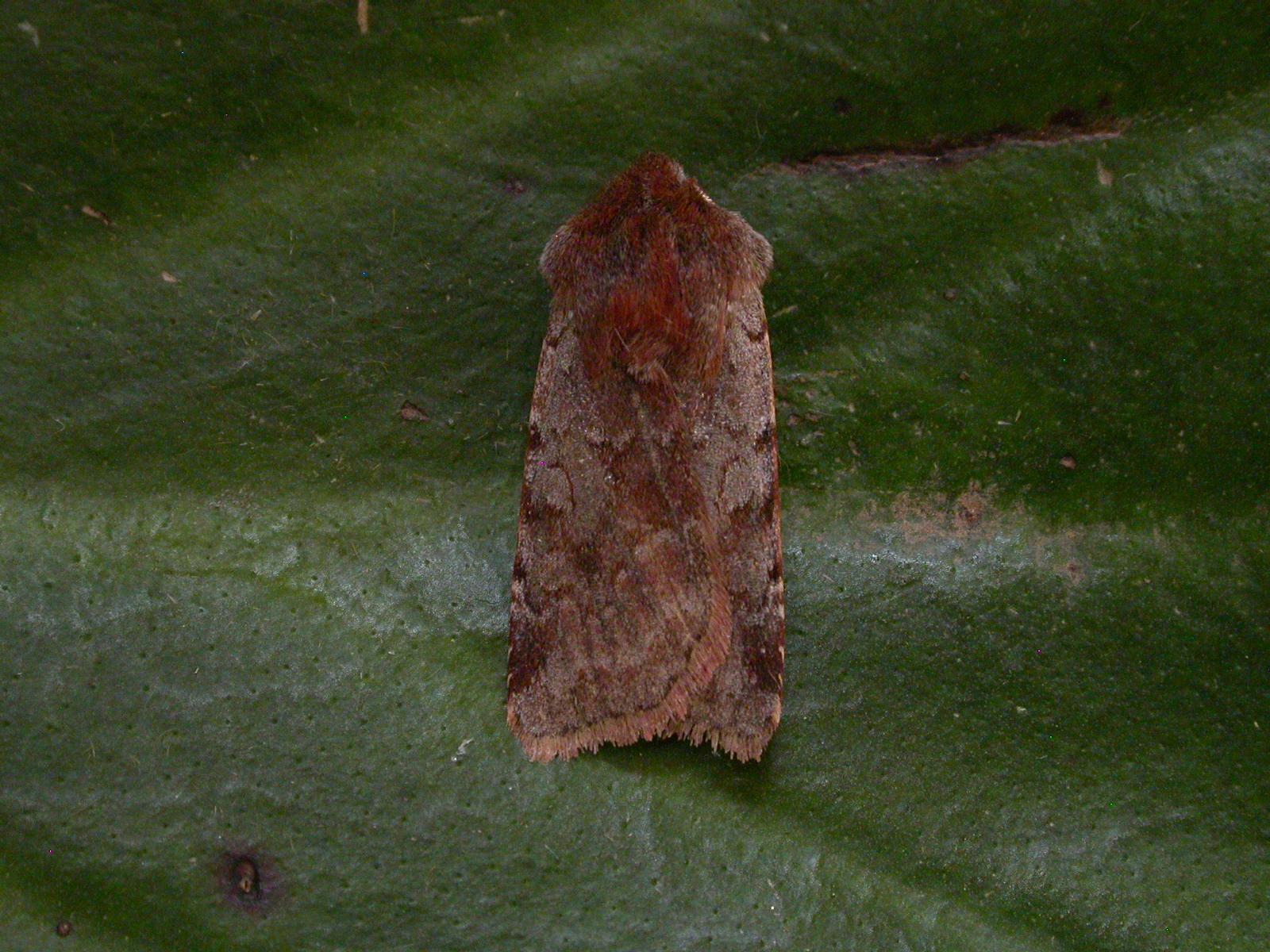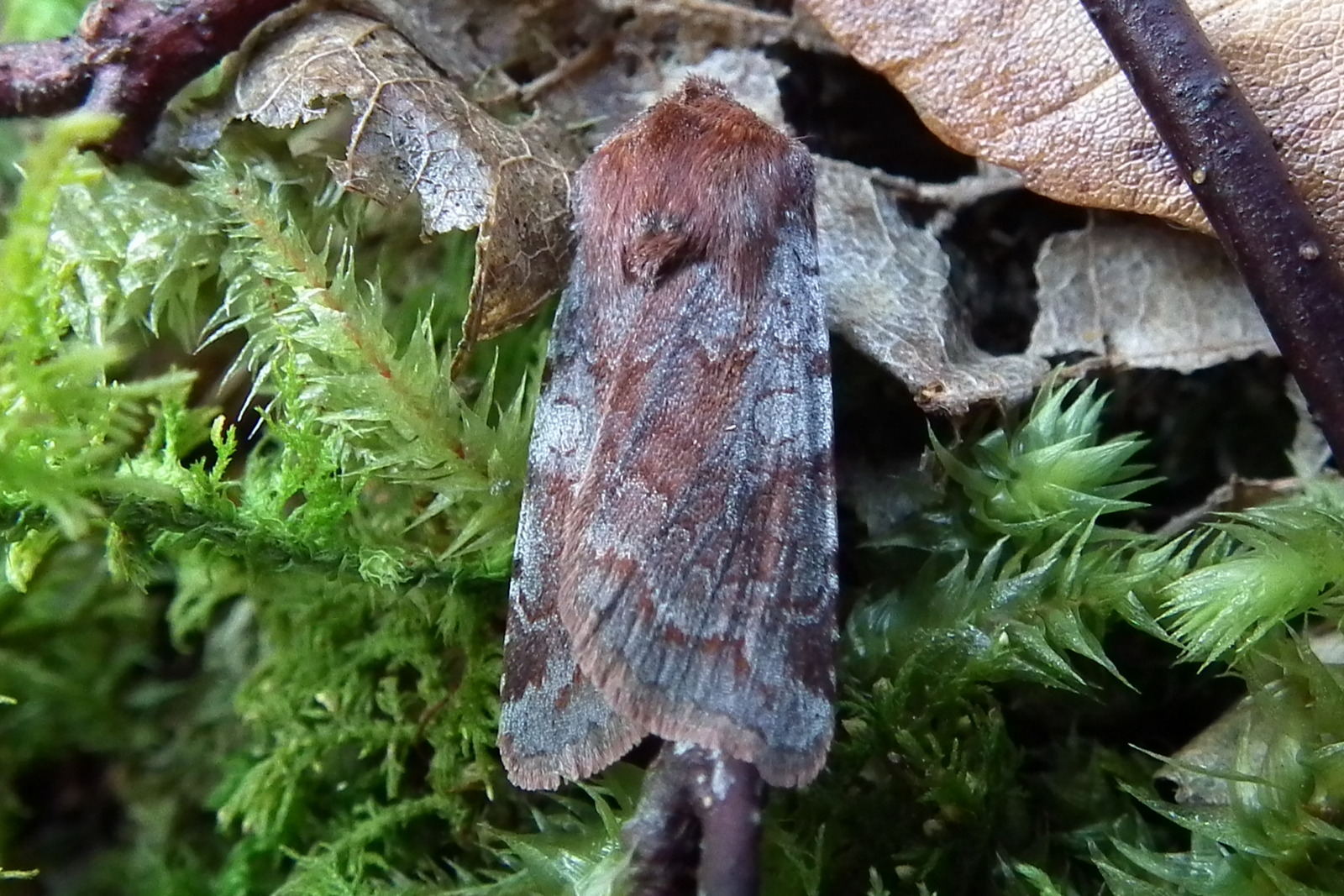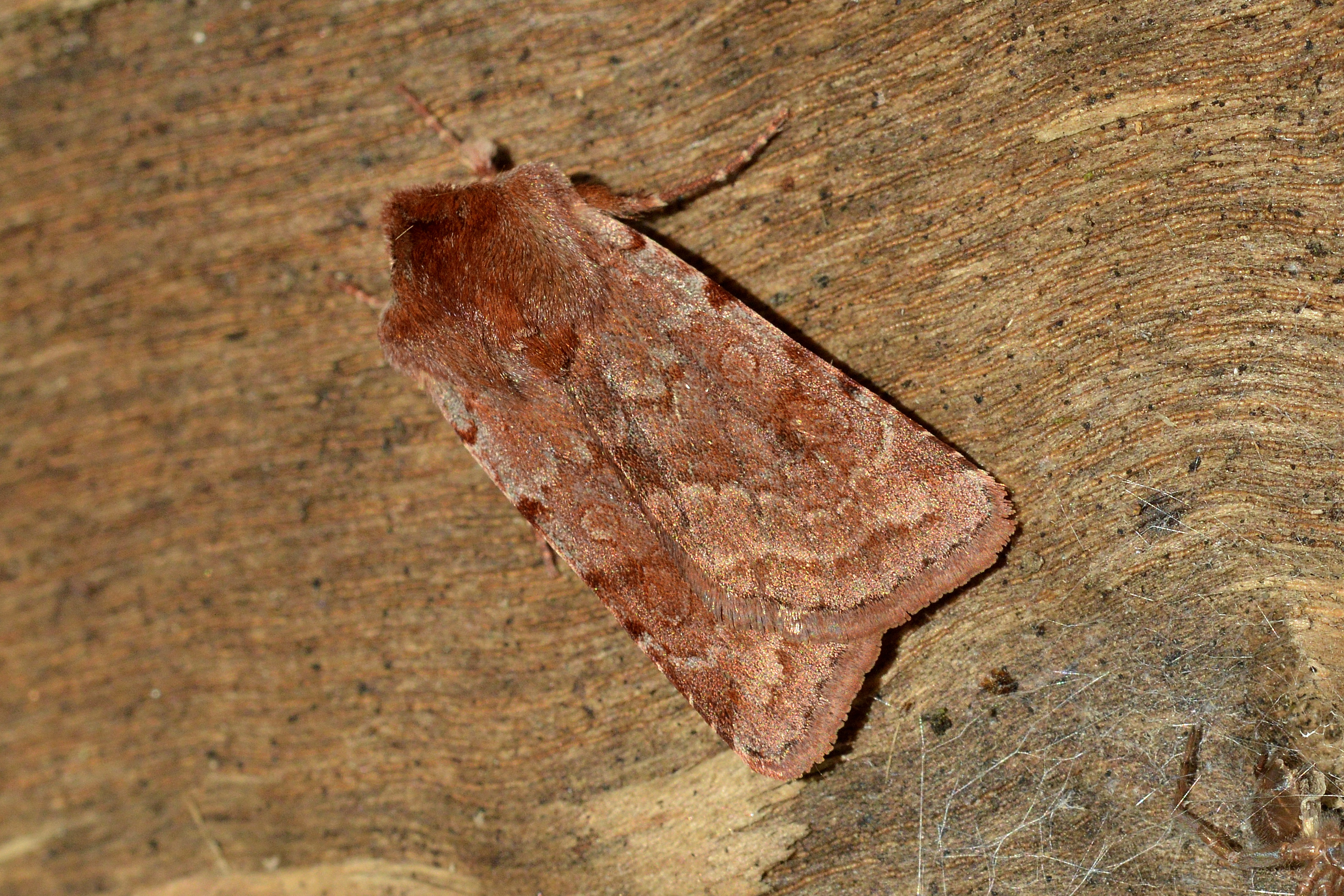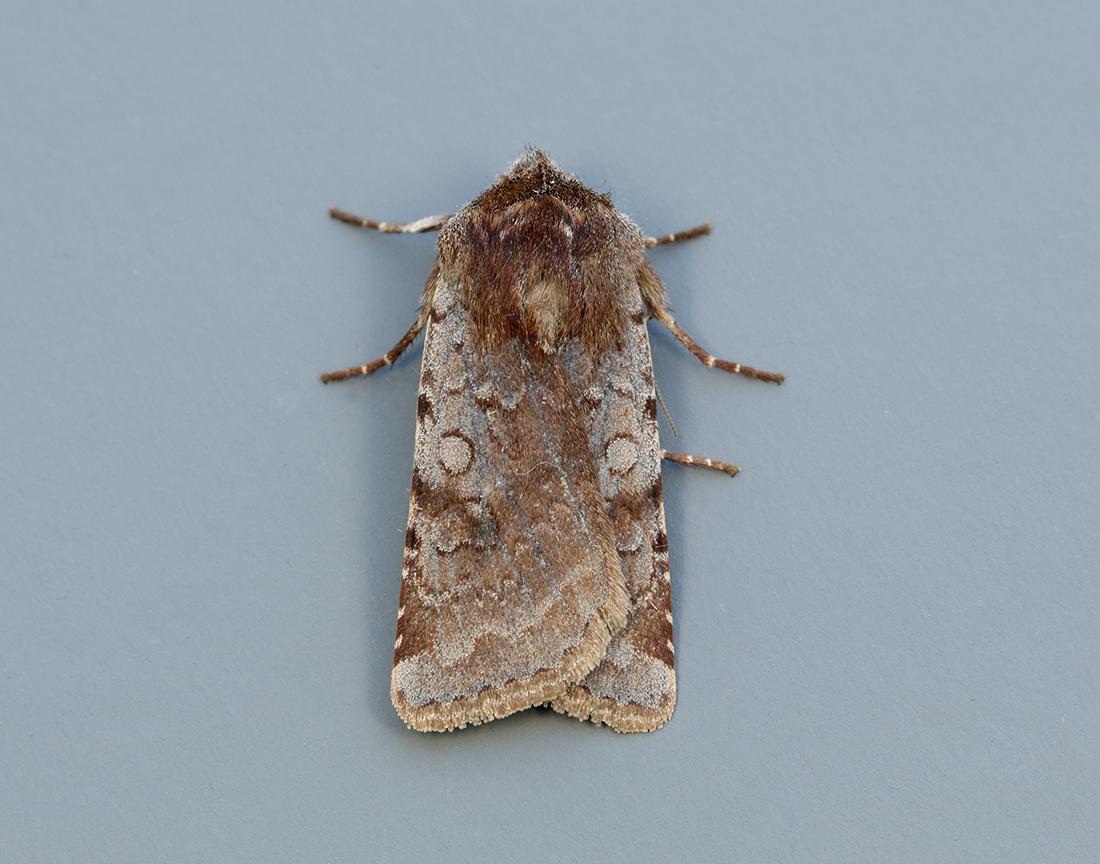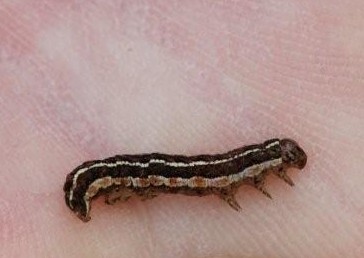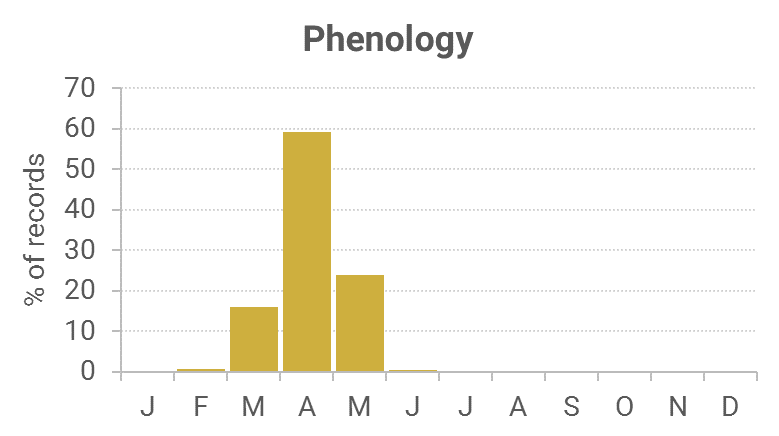Identification
Distinctive with a straight costa and termen until it becomes rounded at the dorsum, plain reddish brown colour with indistinct greyish markings.
Recording Method.
Attracted to light, also comes to sugar and flowers.
Life cycle
One generation. Overwinters as a pupa in a cocoon. Larvae are present May to June, feeding by night and hiding on the foodplant by day.
Larval foodplants
Bedstraws, sallows and Bilberry.
Habitat
Broadleaved woodland, gardens and open country.
History
Lennon (1863) had found it near Dalskairth. Gordon (1913) stated it was generally distributed, being commonest on moorland sallow in Wigtownshire. It also came to sugar in woods at Corsemalzie on 14th June 1899 and 1st July 1905. Earliest date was 2nd April 1896 and 1912.
Archibald Russell (1944) listed it as occurring near Gatehouse of Fleet (VC73) during the years 1942-43. Sir Arthur Duncan (1909-84) during his lifetime had found it at Closeburn, Tynron and Castlehill, Dumfries (all VC72).
At Irvine House Lodge, Auchenrivock, a fine series were trapped in 1974. Then, from 1974 to 1991 all seven Rothamsted stations recorded 140 records between them showing it to be a widespread moth.
From 1992 to 2010 the regular trapped sites at Bargaly Lodge, Kirkton, Cally Woods, Carsfad at Dalry, Durisdeer, Kirriereoch, Carsluith, Old Torr and Forest Moor recorded most of the 180 records, with others from Mochrum Loch and Auchencairn and other scattered sites.

